Imagine the moment in a refined dining setting when you place an order for a succulent, rare steak. The anticipation builds as the chef prepares your dish with precision and care, aiming to serve you a culinary masterpiece. As the plate arrives, the steak, cooked to tender perfection, sits proudly in the center, surrounded by an unmistakable red juice that catches your eye and piques your curiosity.
This scene, familiar to many steak aficionados, often leads to an intriguing question: What exactly is this red juice in steak?
For years, a common belief suggested that the red liquid pooling around a rare steak was blood, a misconception that has influenced dining experiences and preferences around the globe.
Yet, the truth about the red juice in steak is fascinating and sheds light on the culinary science behind preparing the perfect rare steak. It’s a journey through taste, tradition, and science that transforms the way we think about this beloved dish.
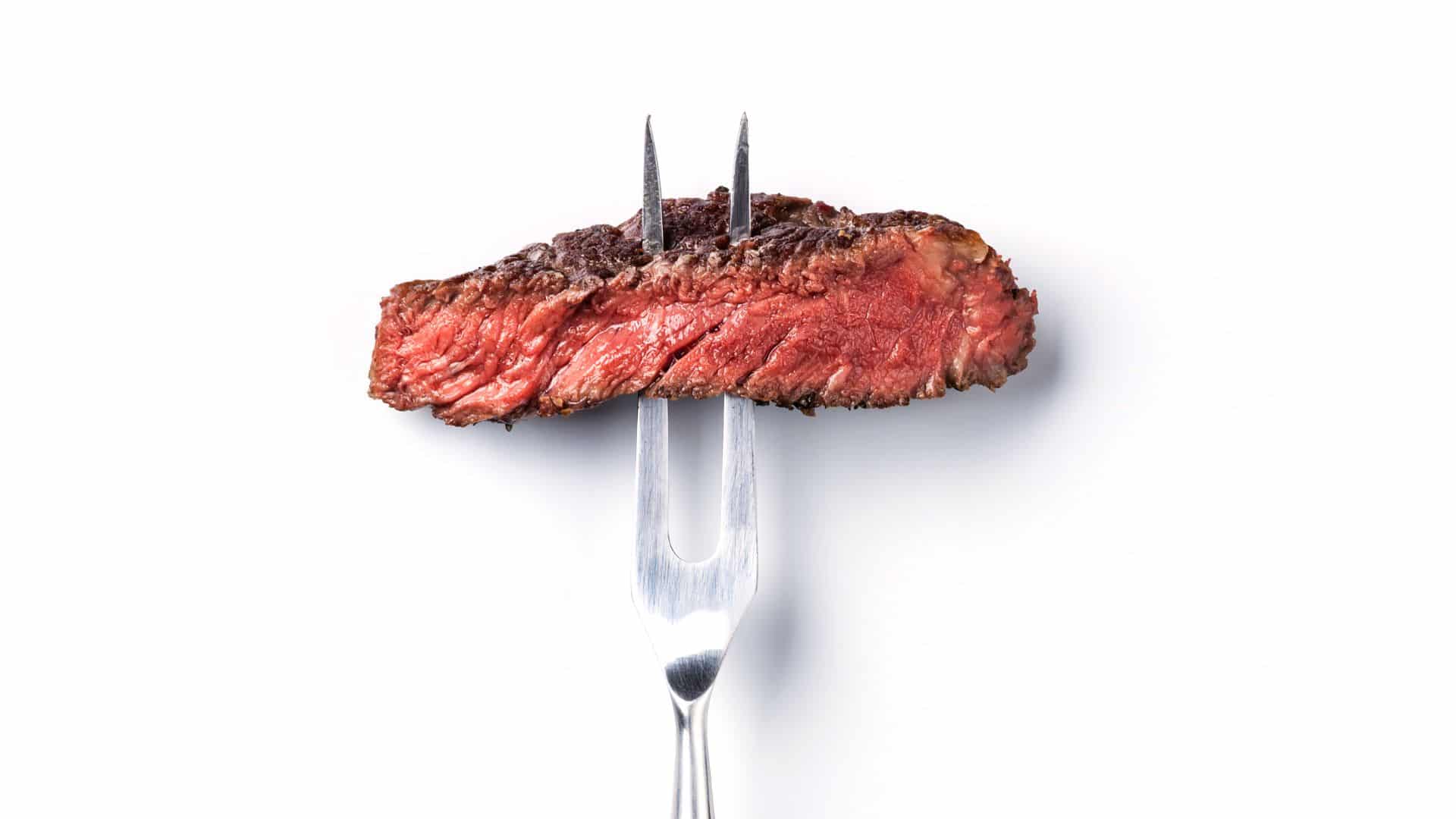
The Truth About the Red Juice in Steak
As we cut into a beautifully cooked rare steak, the sight of red juice surrounding it raises a question that has puzzled diners for generations: Is that blood? Let’s debunk this longstanding myth and reveal the true nature of the red juice, enriching your understanding and appreciation of this culinary delight.
Debunking the Myth: Blood in Steak?
Let’s set the record straight: the red juice accompanying a rare steak is not blood. Most of the blood is removed during the slaughtering process, leaving virtually none in the cut of meat you enjoy at your dinner table. The misconception that this liquid is blood has persisted, but knowing the facts can change how you perceive and enjoy your next steak.
Myoglobin: The Source of the Red Juice
The real star behind the red juice’s appearance is myoglobin, a protein found in animal muscle tissues. Myoglobin plays a crucial role in transporting oxygen to muscles, and this protein gives meat its color.
When steak is cooked, myoglobin releases a red pigment, which mixes with water present in the meat, creating the red juice we see. This mixture is entirely different from blood and is a natural part of the cooking process for meat, especially when prepared rare. [1]
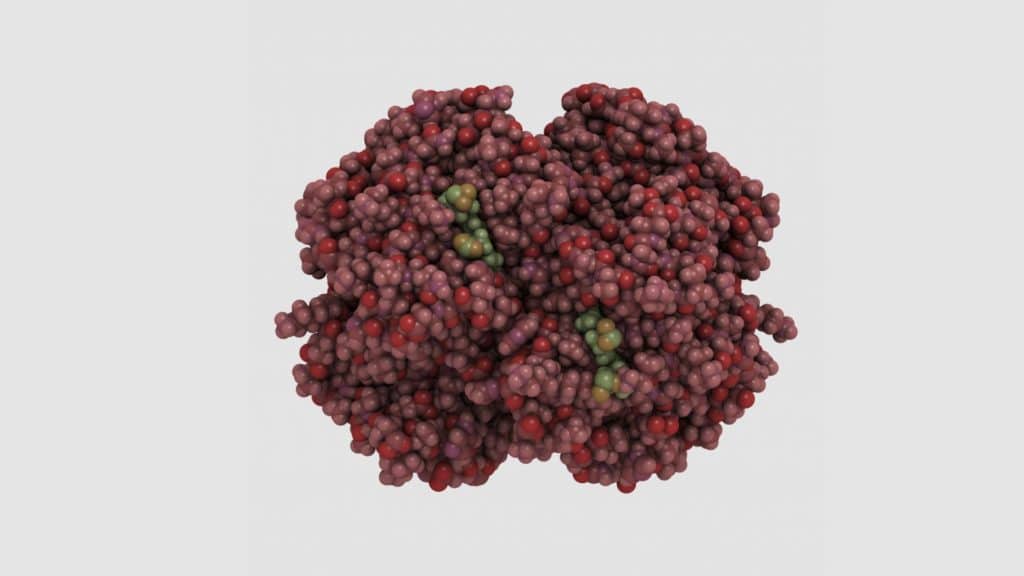

Understanding Myoglobin’s Role in Meat Coloration
The concentration of myoglobin in the muscle determines the color of the meat. This is why beef appears redder than poultry; it simply contains more myoglobin. When a steak is cooked rare, the myoglobin retains its color and moisture, contributing to its juiciness and red juice. It’s a fascinating aspect of culinary science that highlights the intricate relationship between how food is prepared and its final appearance on our plates.
The Science of Steak: Myoglobin Explained
Let’s delve into the science behind myoglobin, providing a clearer picture of how it influences the appearance and taste of the meat we savor.
What Is Myoglobin?
Myoglobin is a protein found in the muscle cells of animals, including the beef used for steaks. Its primary function is to store oxygen and deliver it to muscle cells, especially during periods of intense activity. This oxygen transport is crucial for sustaining muscle energy and performance. [2]
Myoglobin is structurally similar to hemoglobin, the oxygen-carrying protein in blood, but it operates within muscle tissues. [3]
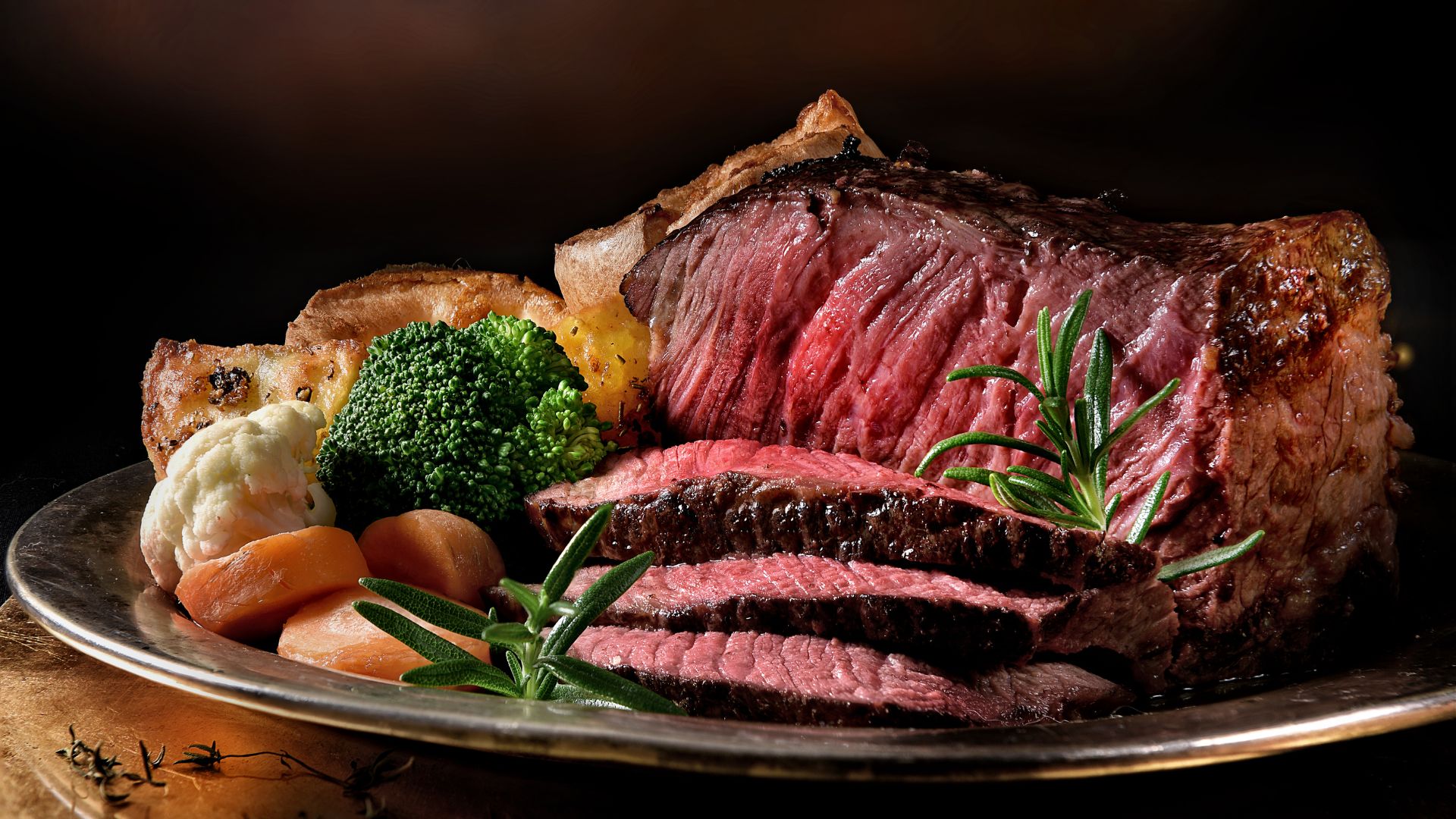
Myoglobin’s Impact on Meat Color
The color of meat is directly influenced by the presence and state of myoglobin. In its natural, uncooked state, myoglobin gives meat a purplish hue. When exposed to oxygen, either during butchering or packaging, myoglobin transforms into oxymyoglobin, turning the meat a bright red color often associated with freshness in beef. Upon cooking, myoglobin undergoes further changes, leading to well-done meat’s brown color. [4]
Rare steak retains its characteristic red color because the myoglobin has not fully denatured or broken down from the heat. The temperature at which a steak is cooked rare (approximately 120-130°F or 49-54°C) is enough to warm the meat while preserving the myoglobin’s color and, consequently, the meat’s redness. This delicate balance between temperature and color is what makes cooking steak to the perfect level of rareness both an art and a science.
Understanding the role of myoglobin in meat not only enhances our appreciation for the culinary arts but also dispels common misconceptions about what we’re eating. The vibrant red or pinkish hue seen in a perfectly cooked rare steak is not a sign of undercooked meat or the presence of blood but a testament to the natural properties of myoglobin and its reaction to heat.
The Art of Cooking Rare Steak
Achieving the perfect rare steak is a culinary endeavor that requires precision, understanding, and respect for the process. The art of cooking steak to rare perfection lies in mastering a few key techniques: temperature control, seasoning, and rest time. These elements work in harmony to unlock the full potential of the meat, ensuring a deliciously juicy and flavorful experience.
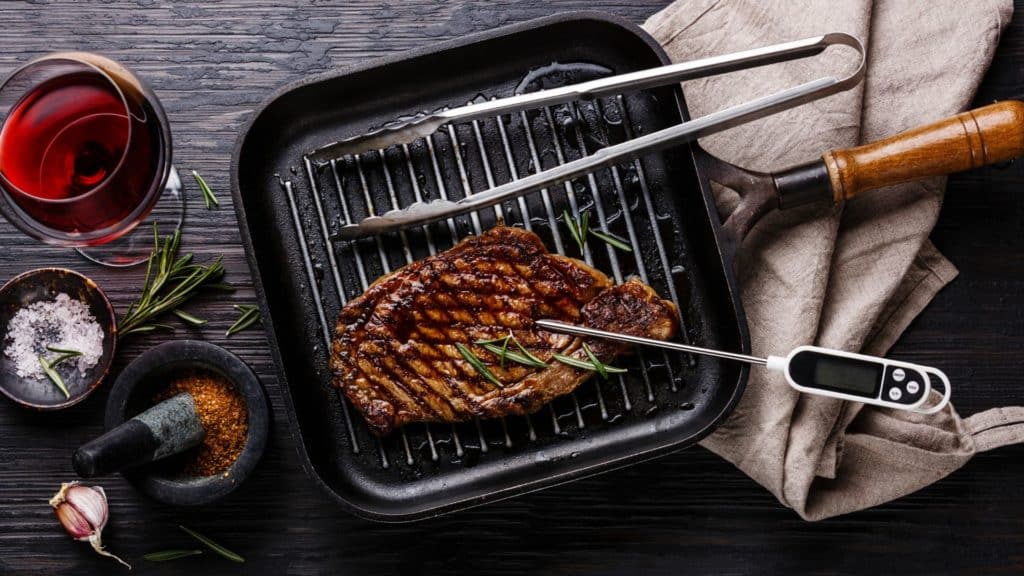
Mastering Temperature Control
Temperature control is the cornerstone of cooking a rare steak. It’s essential to understand that the goal is to warm the interior of the steak without overcooking the outside. A rare steak typically reaches an internal temperature of 120-125°F (49-52°C), where the myoglobin retains its color, and the meat remains tender and moist.
To achieve this, preheat your cooking surface—whether it’s a grill, skillet, or broiler—to a high temperature before adding the steak. This high heat will sear the outside quickly, creating a flavorful crust, while the inside warms to the desired rare temperature. Using a meat thermometer can remove the guesswork, ensuring the steak reaches the perfect temperature every time.
The Importance of Seasoning
Seasoning is not just about adding flavor; it’s about enhancing the natural taste of the steak. Before cooking, generously season the steak with kosher salt and freshly ground black pepper. The salt doesn’t just season the meat; it also draws out moisture, creating a better sear and a more flavorful crust. Applying the seasoning just before cooking ensures that the steak retains its moisture and flavor.
Rest Time: A Critical Step
Perhaps one of the most overlooked aspects of cooking steak is the rest time after it comes off the heat. Resting allows the juices that have been driven to the center of the steak during cooking to redistribute throughout the meat. This means that when you cut into your steak, the juices stay in the meat, not on the plate.
For a rare steak, a rest time of about 5 minutes is sufficient. During this time, the steak continues to cook slightly, which is known as carryover cooking. This rest period is crucial for achieving the perfect balance of juiciness and flavor in your rare steak.

Bringing It All Together
The art of cooking rare steak is a testament to the chef’s skill and understanding of the meat. By mastering temperature control, perfecting seasoning, and respecting rest time, you can create a rare steak that is not only visually appealing but also deliciously satisfying. Each bite of a rare steak prepared with care and precision is a celebration of flavor, texture, and culinary craftsmanship.
As we savor the results of these techniques, let’s remember the science and artistry that go into preparing the perfect rare steak. It’s a culinary journey that invites us to explore, learn, and, most importantly, enjoy the rich and diverse world of steak.
Nutritional Benefits of Rare Steak
Indulging in a rare steak is not just a feast for the senses; it’s also a choice that can support your nutritional health. Beyond its succulent taste and tender texture, rare steak offers significant nutritional benefits, primarily due to its rich content of iron and phosphorus. Understanding these benefits can help us appreciate rare steak not only as a culinary delight but also as a valuable part of a balanced diet.
A Rich Source of Iron
Rare steak is an excellent source of heme iron, a type of iron that the body absorbs more efficiently than the non-heme iron found in plant-based foods. Iron is vital for producing hemoglobin, which carries oxygen from our lungs to the rest of our body. [5]
Without enough iron, our bodies can’t make enough healthy oxygen-carrying red blood cells, leading to a condition known as anemia. This can result in fatigue, weakness, and a variety of other health issues.
The heme iron in rare steak can be particularly beneficial for those with iron-deficiency anemia or those at risk of developing the condition, including menstruating women, pregnant women, and growing children. By incorporating rare steak into their diets, these individuals can help ensure they get a readily absorbable form of this crucial nutrient.
Phosphorus for Bone Health
In addition to iron, rare steak is a good source of phosphorus, a mineral that plays an essential role in the formation and maintenance of healthy bones and teeth. Phosphorus works in tandem with calcium to build strong and durable bone structure, while also aiding in the repair and maintenance of body cells and tissues. [6]
Consuming adequate amounts of phosphorus can contribute to optimizing bone health and preventing conditions such as osteoporosis, which is characterized by weakened bones and an increased risk of fractures. This makes rare steak an excellent food choice for supporting not only muscle health but also the skeletal system.

The Balance of Nutritional Benefits
While rare steak provides these significant health benefits, it’s important to consume it as part of a balanced diet. Incorporating a variety of foods ensures that you’re getting a wide range of nutrients necessary for overall health. Moreover, when it comes to red meat, moderation is key. Enjoying rare steak alongside a diet rich in fruits, vegetables, whole grains, and lean proteins can help maintain heart health and reduce the risk of chronic diseases.
Embracing Rare Steak with Knowledge
Understanding the nutritional benefits of rare steak allows us to make informed choices about our diet. The iron and phosphorus found in this delectable dish can play a critical role in maintaining our health, from ensuring oxygen delivery to every cell in our body to building and maintaining strong bones. So, the next time you savor a rare steak, remember that you’re not just treating your taste buds but also nourishing your body with essential nutrients.
Enjoying Rare Steak Safely and Deliciously
Savoring a rare steak is a pleasure for many, combining the delights of flavor with a texture that can only be described as melt-in-your-mouth. To fully enjoy this culinary experience, it’s crucial to approach it with an eye for quality, safety, and complementary enhancements. Here are essential tips for ensuring that each rare steak you enjoy is not only delicious but also safe and perfectly paired.


Selecting Quality Meat
- Start with the Best: The foundation of a great rare steak is high-quality meat. Opt for fresh, premium cuts from reputable sources. Look for steaks with good marbling, as the fat contributes to flavor and juiciness.
- Know Your Grades: Beef grading gives you an idea of the meat’s quality. In many countries, grades like Prime, Choice, and Select can guide you to the best options for a tender and flavorful rare steak.
Cooking with Precision
- High Heat is Key: Searing the steak on a preheated, high-temperature surface ensures a crisp crust with a juicy interior. Whether using a grill or a pan, getting it hot enough is crucial.
- Timing Matters: Overcooking is the nemesis of a rare steak. Keep cooking times short, and use a meat thermometer to ensure the internal temperature reaches only 120-125°F (49-52°C) for that perfect rare doneness.
- Rest for Perfection: After cooking, let your steak rest for about 5 minutes. This allows juices to redistribute, ensuring every bite is as delicious as the first.
Safety Measures
- Proper Handling: Always handle raw meat with care to avoid cross-contamination. Use separate cutting boards and utensils for raw and cooked foods.
- Know Your Source: Purchasing steak from reputable sources reduces the risk of foodborne illness. Trusted butchers and stores are your allies in enjoying rare steak safely.
- Mind the Temperature: While rare steak is safe for most people, those with compromised immune systems or special dietary needs should consult with a healthcare provider. Cooking meat to at least 145°F (63°C) and letting it rest is recommended for maximum safety.
Enhancing Your Experience
- Complementary Sides: Pair your rare steak with sides that complement its richness. Options like roasted vegetables, a crisp salad, or a baked potato can balance the meal.
- Savory Sauces: Elevate your rare steak with the right sauce. Classics like béarnaise, peppercorn, or a simple compound butter can add layers of flavor.
- Wine Pairings: A glass of red wine, chosen to complement the flavor profile of the steak, can turn a meal into an experience. Look for full-bodied options like Cabernet Sauvignon or Malbec.
Enjoying a rare steak is about more than just the cooking; it’s an art form that involves careful selection, preparation, and pairing. By following these tips, you can ensure that each rare steak you savor is not only cooked to perfection but also enjoyed in the safest and most delightful way possible. So, gather your tools, choose your steak with care, and prepare for a culinary journey that promises to be as rewarding as it is delicious.
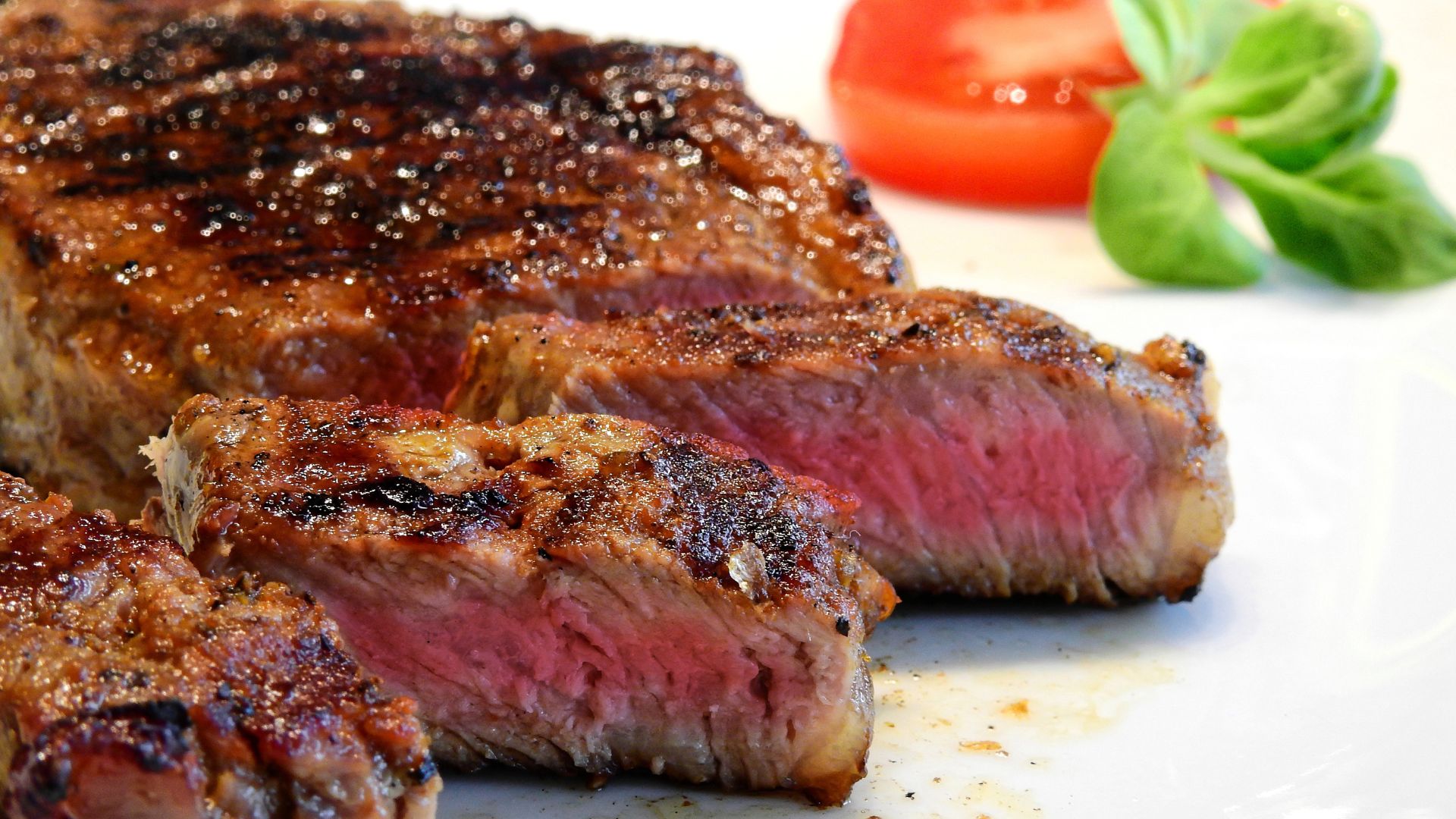
Discovering the Truth: Beyond the Blood in Steak
As we conclude our culinary journey, we’ve unraveled the mysteries and unveiled the truths behind the red juice in rare steak, challenging misconceptions and enlightening our understanding of what makes a rare steak so special. It’s clear now that the vibrant liquid that accompanies our beloved dish is not blood but a natural combination of myoglobin and water, a testament to the steak’s freshness and quality.
Throughout this exploration, we’ve delved into the science of myoglobin, understanding its crucial role in meat’s coloration and how it affects our perception and enjoyment of rare steak. We’ve also navigated the art of cooking rare steak, emphasizing the importance of temperature control, seasoning, and rest time in achieving that perfect succulence and flavor. The nutritional benefits of rare steak, particularly its rich iron and phosphorus content, highlight the dish’s contribution to a healthy diet when enjoyed in moderation.
As we embrace the pleasures and benefits of rare steak, let’s also remember the importance of a balanced diet. Rare steak can be a valuable part of our culinary repertoire, offering not only delightful flavors but also essential nutrients. However, it’s vital to complement these meals with a variety of foods—fruits, vegetables, grains, and other protein sources—to ensure a well-rounded and nutritious diet.
Encourage yourself to embark on adventurous culinary explorations, trying new methods, cuts, and pairings that elevate the rare steak experience. Yet, always approach this exploration with mindfulness, considering the origins of your food, its impact on your health, and the environment. This mindful eating practice enriches your dining experience, making each meal not just a moment of pleasure but also an act of informed choice and appreciation.
In the end, the journey through the world of rare steak is more than just about debunking the myth of the blood in steak; it’s about deepening our appreciation for the nuances of cooking, the joy of eating, and the importance of nourishing our bodies and minds. As we move forward, let’s carry with us the knowledge and insights gained, allowing them to guide our culinary adventures and choices at the dining table.
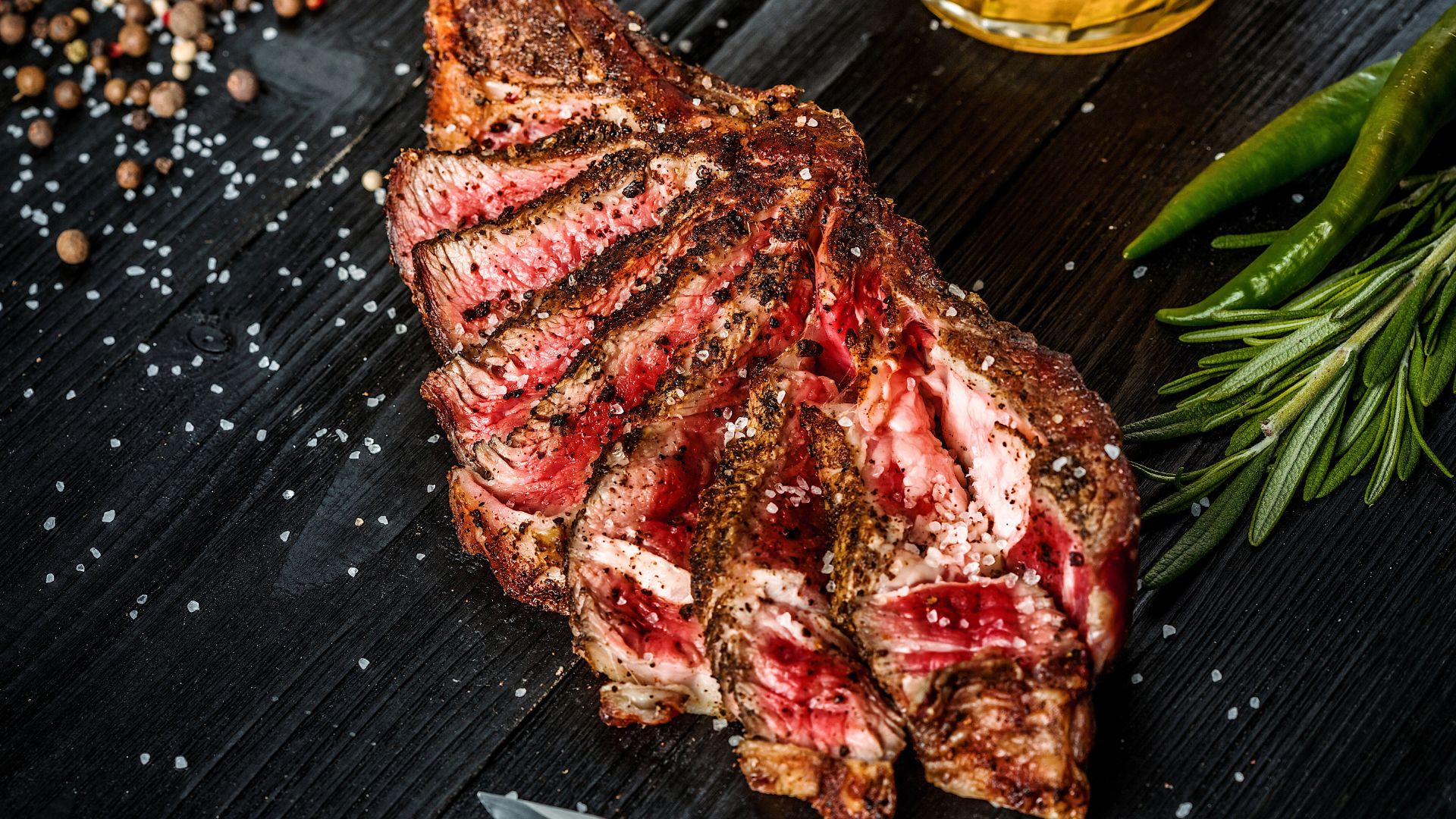
My Personal RX: Enjoying Your Steak in a Healthy Way
From a doctor’s perspective, the discussion around the red juice in steak opens an interesting chapter on nutritional science and wellness. This red juice, rich in myoglobin, not only enhances the steak’s flavor but also presents us with a unique opportunity to discuss the broader aspects of nutrition and holistic health. Here are my tips for maximizing the health benefits and enjoying red juice in steak responsibly and beneficially:
- Opt for Grass-Fed Beef: Grass-fed beef is often higher in certain nutrients, including antioxidants and omega-3 fatty acids, which can complement the nutritional benefits of the red juice in steak.
- Balance with Vegetables: Accompany your steak with a variety of colorful vegetables to balance your meal with fiber, vitamins, and minerals.
- Moderation Is Key: Enjoying steak in moderation ensures that you can benefit from its nutrients without overconsumption of saturated fats.
- Choose Lean Cuts: Opting for leaner cuts of steak can help reduce intake of unhealthy fats while still allowing you to enjoy the taste and benefits of red juice in your meal.
- Incorporate Immune Support: To complement the iron and phosphorus in your steak, consider incorporating my Immune Support supplements. This targeted blend of nutrients is designed to bolster your body’s immune reserves, providing broad-spectrum support that complements a balanced diet’s nutritional profile.
- Stay Hydrated: Drinking plenty of water with your meal aids digestion and helps your body absorb the nutrients more effectively.
- Explore Cooking Methods: Experimenting with different cooking methods can enhance the flavor and potentially preserve more nutrients in the steak.
- Engage with Holistic Health Resources: Dive into my Protocol e-book to explore a comprehensive guide on holistic health. This powerful resource offers insights into living your best life, focusing on dietary choices, physical activity, and mental wellness that support overall health.
- Mindful Eating Practices: Focus on the eating experience, appreciating the flavors, textures, and nutritional benefits of your meal. This can lead to greater satisfaction and better digestion.
Integrating these practices into your lifestyle allows you to enjoy the delicious and nutritious benefits of red juice in steak while aligning with a holistic approach to health and well-being.
Sources:
- Siddiqui, S. A., Bahmid, N. A., Shekhawat, G. K., & Jafari, S. M. (2022b). Introduction to postharvest and postmortem technology. In Elsevier eBooks (pp. 1–38). https://doi.org/10.1016/b978-0-12-818572-8.00010-3
- Savarese, M., Jokela, M., & Udd, B. (2023). Distal myopathy. In Handbook of Clinical Neurology (pp. 497–519). https://doi.org/10.1016/b978-0-323-98818-6.00002-9
- Aharoni, R., & Tobi, D. (2018). Dynamical comparison between myoglobin and hemoglobin. Proteins, 86(11), 1176–1183. https://doi.org/10.1002/prot.25598
- Suman, S. P., & Joseph, P. (2013). Myoglobin chemistry and meat color. Annual review of food science and technology, 4, 79–99. https://doi.org/10.1146/annurev-food-030212-182623
- Cross, A. J., Harnly, J. M., Ferrucci, L. M., Risch, A., Mayne, S. T., & Sinha, R. (2012). Developing a heme iron database for meats according to meat type, cooking method and doneness level. Food and nutrition sciences, 3(7), 905–913. https://doi.org/10.4236/fns.2012.37120
- Phosphorus in diet: MedlinePlus Medical Encyclopedia. (n.d.). https://medlineplus.gov/ency/article/002424.htm












 Subscribe to Ask Dr. Nandi YouTube Channel
Subscribe to Ask Dr. Nandi YouTube Channel










